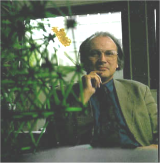| Prof. Gert D. Billing | Summer School | Symposium |
|
|
|||||
|
ContentThe ultimate goal of a molecular dynamical approach to chemical reaction dynamics is to be able to understand and calculate the rate of chemical reactions from first principles, ie, given a specific interaction potential for the nuclear motion one should in principle be able to obtain the probabilities, cross sections and rate constants for fundamental elementary reaction processes by solving the equations of motion for the system. Much of the understanding of chemical reactivity at a molecular level has come about by using molecular dynamical methods (e.g. classical or quantum mechanics) or various statistical assumptions and models as introduced for example in the Transition State and theories for unimolecular reactions. This research area today is a very active one, where the experimental and theoretical techniques for probing the systems at a molecular and/or time resolved molecular level are becoming more and more refined. Most standard courses concerning physical chemistry or chemical physics contain a small part on molecular reaction dynamics and barely cover
This course covers these areas, but in addition includes concepts from molecular dynamics calculations as well as methods for treating reactions in solution and on surfaces. The information gained from molecular dynamics calculations can be used in chemical kinetic modeling. Such modeling has gained growing importance by its application in interstellar and atmospheric chemistry. The course will give an introduction to such modeling in the area of atmospheric chemistry. Subjects coveredThe course covers subjects such as
The students will obtain an understanding of the molecular details of chemical reactions in the phase, on surfaces and in solutions and through the presented methods they will be able to calculate chemical rate constants. The students will consider molecular processes ranging from simple energy transfer processes in the gas phase to solvent effects on reactions in liquids and on surfaces, from both small to large molecular systems. The students will be exposed to the variety and richness within the field of molecular dynamics and they will observe the need for many different methods-from exact quantum mechanical descriptions of small systems to approximate statistical methods for large systems. The course will give them the necessary background for evaluating and potentially controlling (selection of for instance laser pulses and reaction conditions) chemical reactivity. The calculated rates can be used to address detailed chemical kinetic modeling of non-equilibrium systems and examples from macroscopic systems as lasers and atmospheric chemistry will be given. Literature
G. D. Billing and K. V. Mikkelsen, "Advanced Molecular Dynamics and Chemical Kinetics", Wiley 1997; OrganiserK. V. Mikkelsen, Dept. of Chemistry, H. C. ěrsted Institute. Teachers
K. V. Mikkelsen, M. A. Ratner and V. Mujica. Guest TeachersAllan Gross, Danish Meteorological Institute and Matthew Johnson, Department of Chemistry, University of Copenhagen. |
|||||
